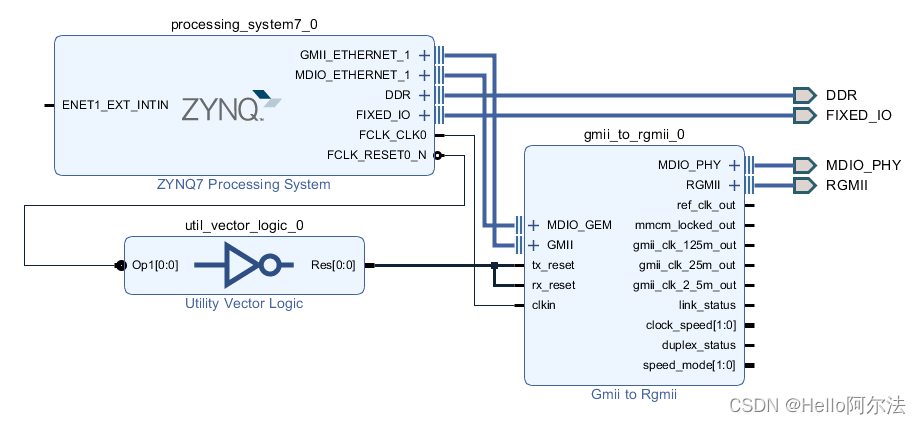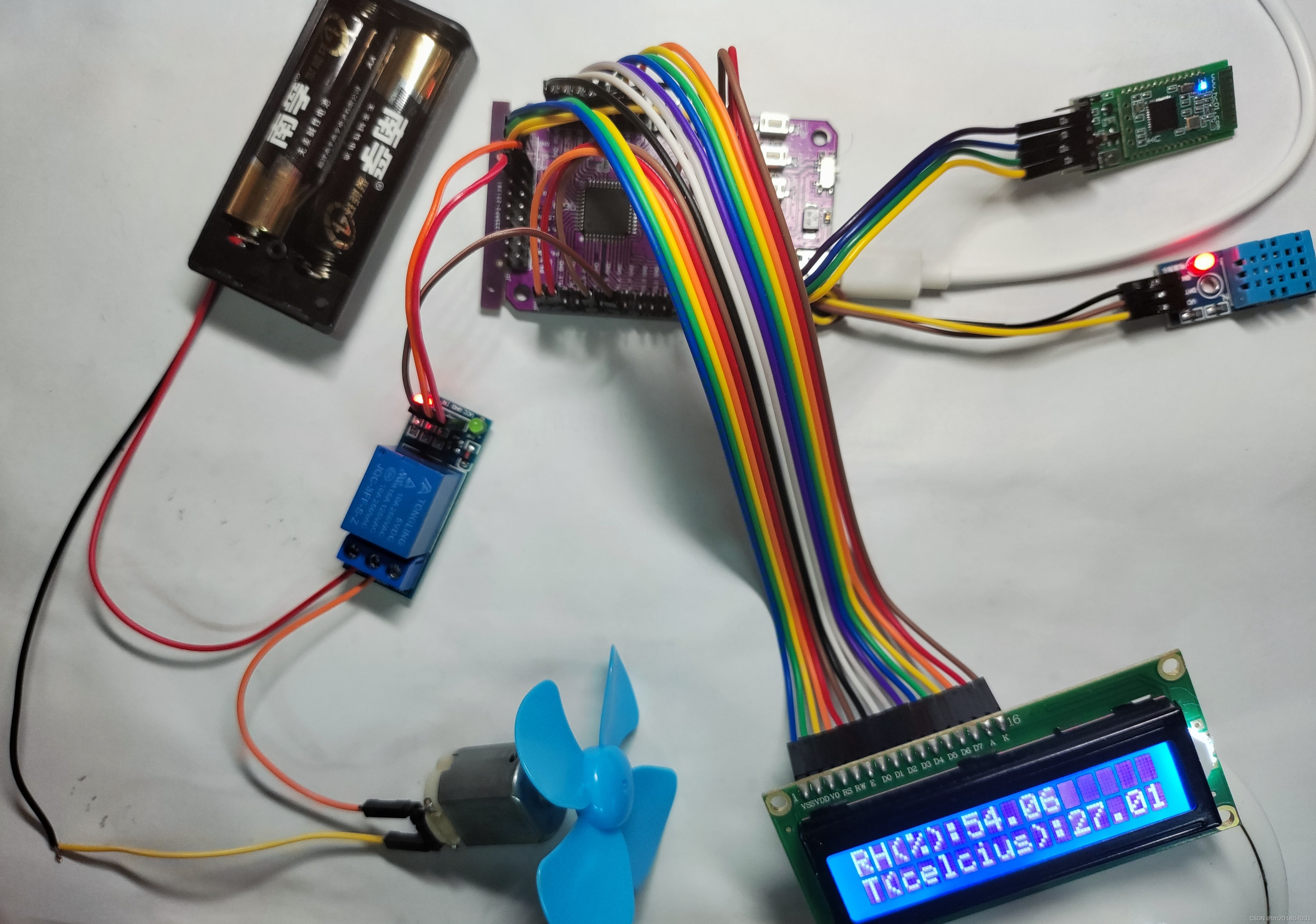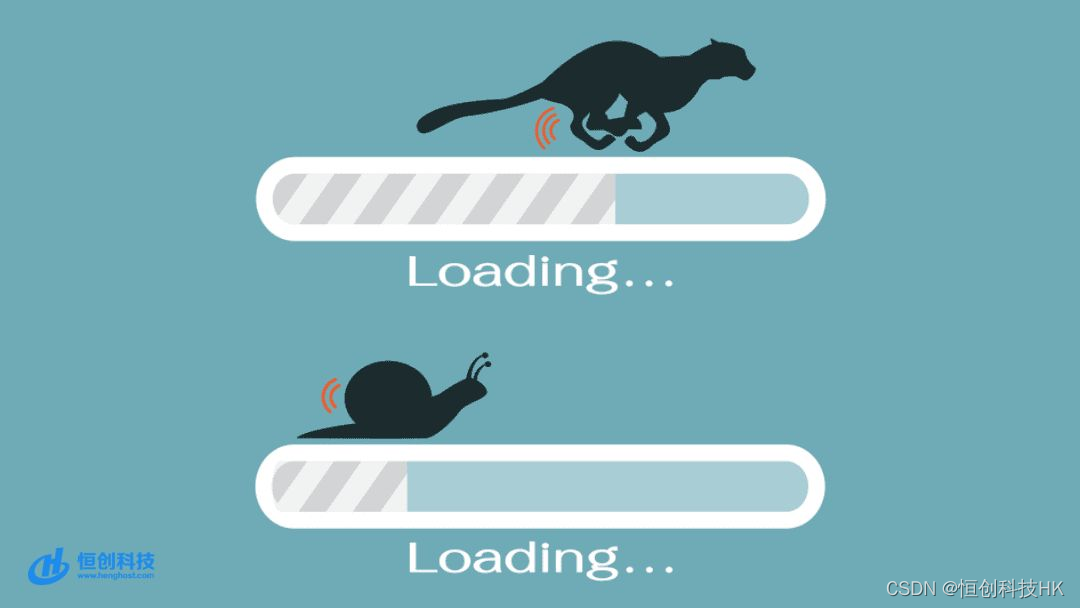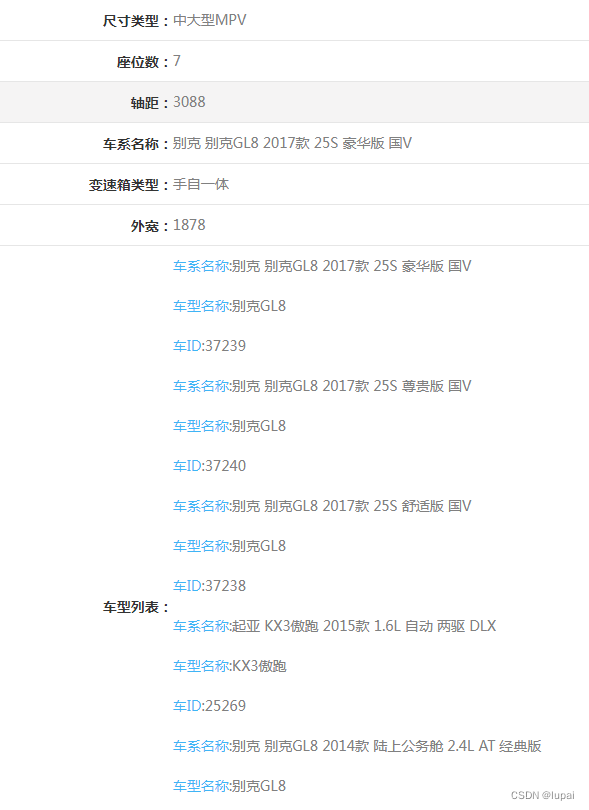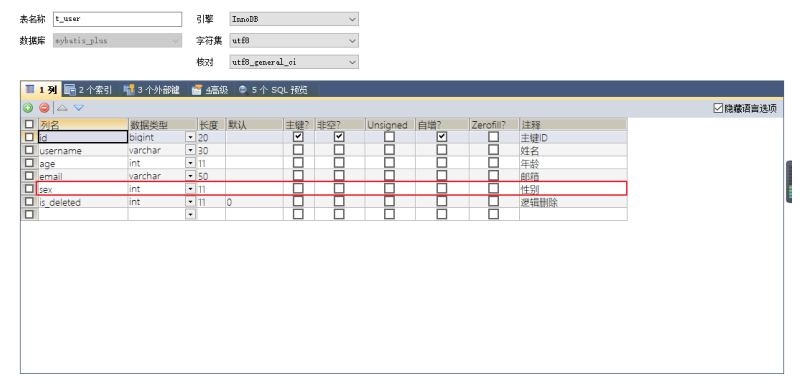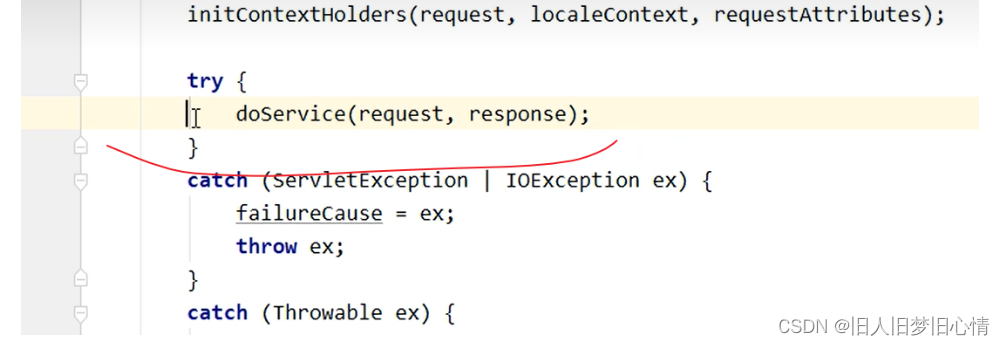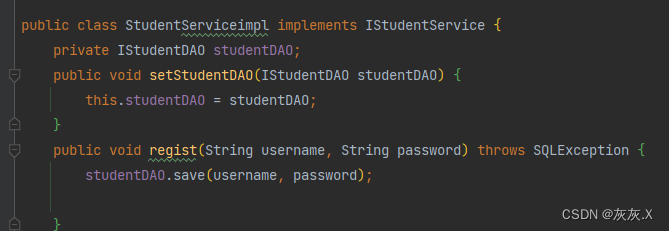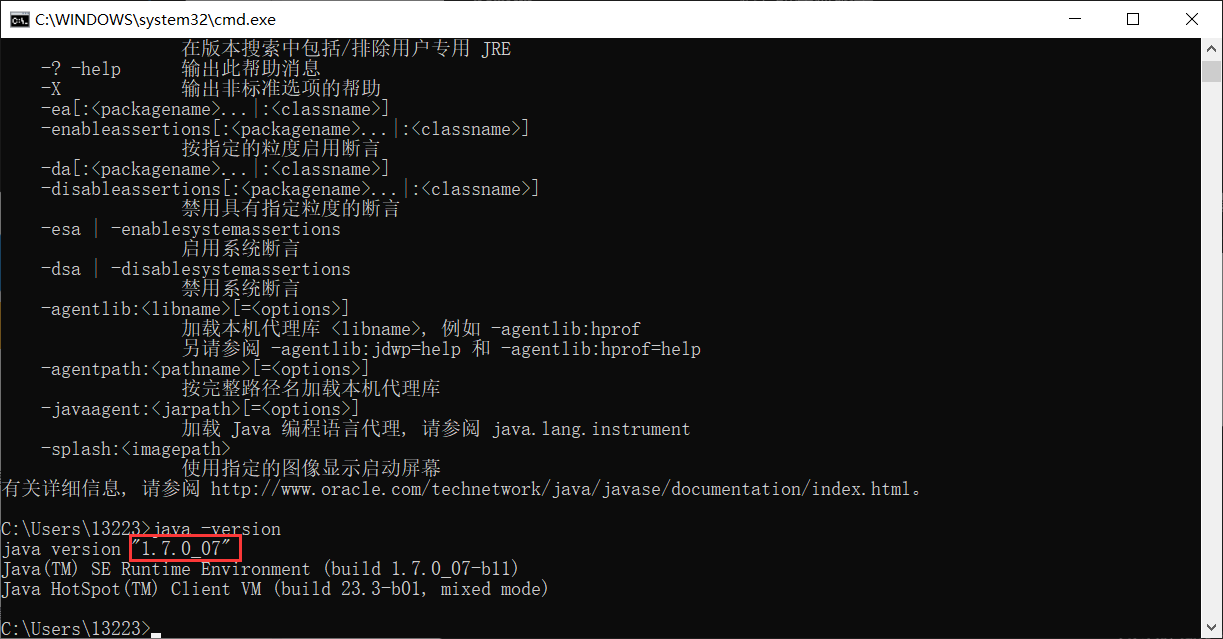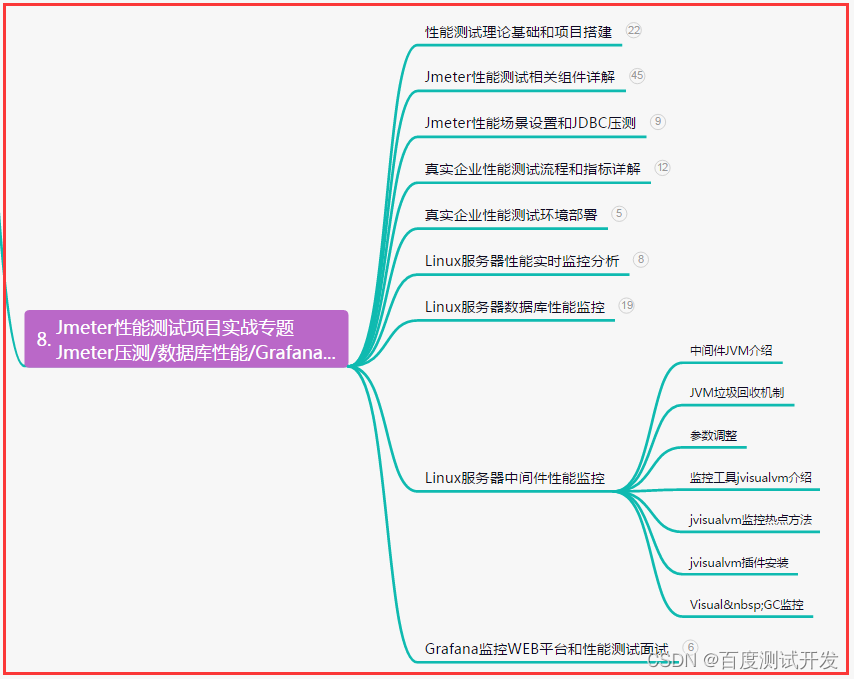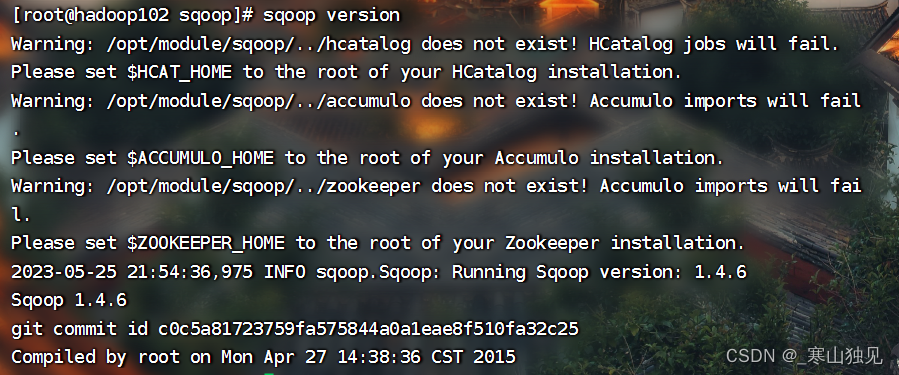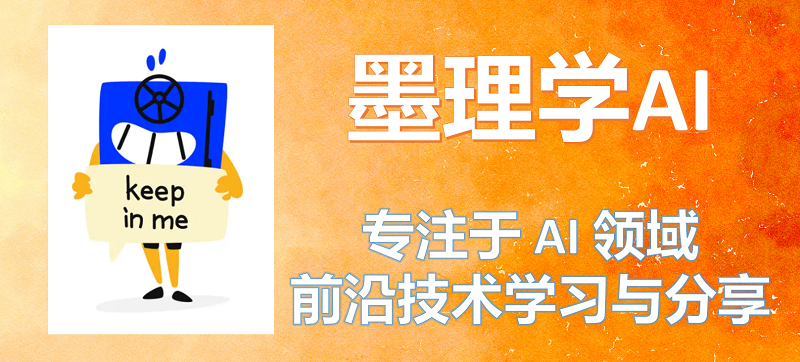1. 类型选择器
<!DOCTYPE html>
<html lang="en">
<head>
<meta charset="UTF-8">
<meta http-equiv="X-UA-Compatible" content="IE=edge">
<meta name="viewport" content="width=device-width, initial-scale=1.0">
<title>Document</title>
<!--
类型选择器:
h1 { }
-->
<style>
p {
color: red;
}
</style>
</head>
<body>
<p>HelloWorld</p>
</body>
</html>
2. 通配选择器
<!DOCTYPE html>
<html lang="en">
<head>
<meta charset="UTF-8">
<meta http-equiv="X-UA-Compatible" content="IE=edge">
<meta name="viewport" content="width=device-width, initial-scale=1.0">
<title>Document</title>
<!--
通配符选择器:
* { }
-->
<style>
* {
color: green;
}
</style>
</head>
<body>
<h1>HelloWorld</h1>
<p>WorldHello</p>
</body>
</html>
3. 类选择器
<!DOCTYPE html>
<html lang="en">
<head>
<meta charset="UTF-8">
<meta http-equiv="X-UA-Compatible" content="IE=edge">
<meta name="viewport" content="width=device-width, initial-scale=1.0">
<title>Document</title>
<!--
类选择器:
.box { }
*.box { }
=> 以上两者是等价的;
-->
<style>
.box { /* 匹配所有含有box类的标签 */
background-color: green;
}
*.box {
background-color: red;
}
span.test { /* 匹配所有span标签中含有test类的 */
color: green;
}
</style>
</head>
<body>
<div class="box">HelloWorld</div>
<span class="test">好吧</span>
<p class="test">好吧</p>
</body>
</html>
4. ID选择器
<!DOCTYPE html>
<html lang="en">
<head>
<meta charset="UTF-8">
<meta http-equiv="X-UA-Compatible" content="IE=edge">
<meta name="viewport" content="width=device-width, initial-scale=1.0">
<title>Document</title>
<style>
#First {
background-color: yellow;
}
</style>
</head>
<body>
<div id="First">HelloWorld</div>
</body>
</html>
5. 属性选择器1
<!DOCTYPE html>
<html lang="en">
<head>
<meta charset="UTF-8">
<meta name="viewport" content="width=device-width, initial-scale=1.0">
<title>Document</title>
<style>
/*1. 必须是input选择器同时具有value这个属性 */
/* input[value] {
color: red;
} */
/* 2.匹配具有type属性且其值为text的元素 */
input[type=text] {
color: green;
}
/* 3. 匹配具有class属性且其值以icon开头的元素*/
div[class^=icon] {
color: red;
}
/* 4. 匹配具有class属性且其值以data结尾的元素 */
section[class$=data] {
color: green;
}
/* 5. 匹配具有class属性且其值中含有a字母的元素 */
span[class*=a]{
color: blue;
}
</style>
</head>
<body>
<!-- 1.利用属性选择器可以不用借助于类或者id选择器 -->
<!-- <input type="text" name="" id="" value="请输入用户名:"> -->
<!-- <input type="text" name="" id=""> -->
<!-- 2.属性选择器可以选择 属性=值 的某些元素 -->
<input type="text" name="" id="">
<input type="password" name="" id="">
<!-- 3.属性选择器可以选择属性值开头的某些元素 -->
<div class="icon1">图标1</div>
<div class="icon2">图标2</div>
<div class="icon3">图标3</div>
<div class="icon4">图标4</div>
<!-- 4.与3相反,结尾的 -->
<section class="icon1-data">熊大</section>
<section class="icon2-data">熊二</section>
<section class="icon3-data">熊三</section>
<!-- 5.匹配具有某一属性并且值中含有val的元素 -->
<span class="rwg">我中没有a</span><br/>
<span class="fs ">我中没有a</span><br/>
<span class="te1sa">我中含有a</span><br/>
</body>
</html>

6. 属性选择器2
<!DOCTYPE html>
<html lang="en">
<head>
<meta charset="UTF-8">
<meta http-equiv="X-UA-Compatible" content="IE=edge">
<meta name="viewport" content="width=device-width, initial-scale=1.0">
<title>Document</title>
<!--
格式:选择器 [属性名 运算符 属性值]
-->
<style>
/* 等价于.class1 {
color: red;
} */
*.class1 {
color: red;
}
span *.class2 {
color: green;
}
[href] { /* 所有含有href属性的选择器 */
color: yellow;
}
[href="../../res/1.ico"] { /* 所有含有href属性的选择器中href属性的值为"../../res/1.ico"的选择器 */
background-color: purple;
}
span[self^="zhang"] { /* 选择器是span, 并且含有属性self, 并且self的值是以zhang开头的 */
color: pink;
}
span[self$="world"] { /* ...并且self属性的值是以world结尾的 */
color: red;
}
span[self*="how"] { /* ...并且self属性的值中含有"how" */
color: blue;
}
[class~="class3"] { /* 所有包含属性class, 且属性值中带有"class3"单词的选择器 */
font-weight: bolder;
font-size: 30px;
}
[lang|="xn"] { /* 所有包含属性lang, 且属性值以"xn"开头的选择器 */
border: 1px solid black;
background-color: green;
}
</style>
</head>
<body>
<div class="class1 class2">helloWorld</div>
<p><span class="class1">第一个span元素</span></p>
<p><span>第二个span元素</span></p>
<p><a href="https://www.baidu.com">百度</a></p>
<p><a href="../../res/1.ico">图标</a></p>
<p><span self="zhangXingWei">zhangXingWei</span></p>
<p><span self="Helloworld">Helloworld</span></p>
<p><span self="howareyou">howareyou</span></p>
<p><span class="class4 class2 class3">class4 class2 class3</span></p>
<p><span class="class4 class3">class1 class3</span></p>
<p><span lang="xn-cn">lang</span></p>
<p><span lang="cn-xn">lang</span></p>
<h3>我是前置h3</h3>
</html>
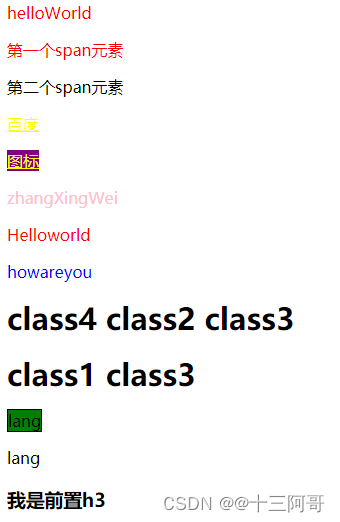
7. 伪类选择器1
<!DOCTYPE html>
<html lang="en">
<head>
<meta charset="UTF-8">
<meta http-equiv="X-UA-Compatible" content="IE=edge">
<meta name="viewport" content="width=device-width, initial-scale=1.0">
<title>Document</title>
<!--
所有伪类:(动态伪类选择器, 状态伪类选择器, 结构伪类选择器, 否定伪类选择器)
(1) 动态伪类选择器:
:link a:link 选择所有未被访问的链接;
:visited a:visited 选择所有已访问的链接;
:hover a:hover 选择鼠标悬停其上的链接;
:active a:active 选择活动的链接;
:focus input:focus 选择获得焦点的 <input> 元素;
(2) 状态伪类选择器:
:checked input:checked 选择每个被选中的 <input> 元素;
:disabled input:disabled 选择每个被禁用的 <input> 元素;
:enabled input:enabled 选择每个已启用的 <input> 元素;
(3) 结构伪类选择器:
:first-child p:first-child 选择作为其父的首个子元素的每个 <p> 元素;
:last-child p:last-child 选择作为其父的最后一个子元素的每个 <p> 元素;
:nth-child(n) p:nth-child(2) 选择作为其父的第二个子元素的每个 <p> 元素;
:first-of-type p:first-of-type 选择作为其父的首个 <p> 元素的每个 <p> 元素;
:last-of-type p:last-of-type 选择作为其父的最后一个 <p> 元素的每个 <p> 元素;
:only-of-type p:only-of-type 选择作为其父的唯一 <p> 元素的每个 <p> 元素;
:root root 选择元素的根元素;
:nth-last-child(n) p:nth-last-child(2) 选择作为父的第二个子元素的每个<p>元素,从最后一个子元素计数;
:nth-of-type(n) p:nth-of-type(2) 选择作为其父的第二个 <p> 元素的每个 <p> 元素;
:nth-last-of-type(n) p:nth-last-of-type(2) 选择作为父的第二个<p>元素的每个<p>元素,从最后一个子元素计数
:only-child p:only-child 选择作为其父的唯一子元素的 <p> 元素;
:empty p:empty 选择没有子元素的每个 <p> 元素;
(4) 否定伪类选择器:
:not(selector) :not(p) 选择每个非 <p> 元素的元素;
(5) 其他:
:in-range input:in-range 选择具有指定范围内的值的 <input> 元素;
:out-of-range input:out-of-range 选择值在指定范围之外的 <input> 元素;
:read-only input:read-only 选择指定了 "readonly" 属性的 <input> 元素;
:read-write input:read-write 选择不带 "readonly" 属性的 <input> 元素;
:required input:required 选择指定了 "required" 属性的 <input> 元素;
:valid input:valid 选择所有具有有效值的 <input> 元素;
:invalid input:invalid 选择所有具有无效值的 <input> 元素;
:optional input:optional 选择不带 "required" 属性的 <input> 元素;
:lang(language) p:lang(it) 选择每个 lang 属性值以 "it" 开头的 <p> 元素;
:target #news:target 选择当前活动的 #news 元素(单击包含该锚名称的 URL);
-->
</head>
<body>
</body>
</html>
8. 伪类选择器2
<!DOCTYPE html>
<html lang="en">
<head>
<meta charset="UTF-8">
<meta http-equiv="X-UA-Compatible" content="IE=edge">
<meta name="viewport" content="width=device-width, initial-scale=1.0">
<title>Document</title>
<style>
/*
1. E:first-child: 匹配父元素中的第一个子元素E;
E:last-child: 匹配父元素中的最后一个子元素E;
E:nth-child(n):匹配父元素中的第n个子元素E;
2. 细说nth-child(n):
1. n可以是数字, 关键字和公式;
2. n如果是数字, 就是选择第n个子元素, 里面数字从1开始;
3. n如果关键字, even是偶数, odd是奇数;
4. n如果是公式, 则括号中可以是以下值: (公式中的字母必须是n, 不能是其它字母)
(1) n(所有的);
(2) 2n(偶数);
(3) 2n+1(奇数);
(4) 5n(5,10,15, 5的倍数);
(5) n+5(从第5个开始(包括第5个)直到最后);
(6) -n+5(前5个(包括第5个));
*/
ul li:first-child { /* ul的所有小li中的第一个小li */
background-color: red;
}
ul li:last-child { /* ul的所有小li中的最后一个小li */
background-color: green;
}
ul li:nth-child(3) { /* ul的所有小li中的第三个小li */
background-color: purple;
}
ul li:nth-child(even) { /* ul中所有偶数行的小li */
background-color: blue;
}
ol li:nth-child(2n) {
background-color: yellow;
}
</style>
</head>
<body>
<ul>
<li>1</li>
<li>2</li>
<li>3</li>
<li>4</li>
<li>5</li>
<li>6</li>
<li>7</li>
<li>8</li>
</ul>
<br>
<ol>
<li>ol-li-1</li>
<li>ol-li-2</li>
<li>ol-li-3</li>
<li>ol-li-4</li>
<li>ol-li-5</li>
<li>ol-li-6</li>
</ol>
</body>
</html>

9. 伪类选择器3
<!DOCTYPE html>
<html lang="en">
<head>
<meta charset="UTF-8">
<meta http-equiv="X-UA-Compatible" content="IE=edge">
<meta name="viewport" content="width=device-width, initial-scale=1.0">
<title>Document</title>
<style>
/*
1. :first-of-type:
:last-of-type:
:nth-of-type(n):
2. 细说: nth-of-type(n) 和 nth-child(n)的区别:
E:nth-child(n) 执行时首先检查n, 确定是第几个孩子, 然后将该孩子的类型与E进行匹配, 若匹配就执行, 否则就不执行;
E:nth-of-type(n) 执行时首先检查有无E类型, 如果有, 就从该类型开始将其第n个孩子进行相应的操作;
*/
ul li:nth-of-type(2n) {
background-color: red;
}
/*
1. 首先检查n, 确定是section的第1个孩子, 然后检查section的第一个孩子, 发现是p, 发现与E类型(div)不匹配, abort;
下例说明:section中的第一个孩子必须是div类型才能匹配生效;
*/
section div:nth-child(1) {
background-color: yellow;
}
/*
2. 首先检查有无div类型, 发现有, 然后就将section中的第n个div进行相应操作, ...
下例说明:section中的孩子系列中所有的div类型中的第二个div才能匹配;
*/
section div:nth-of-type(2) {
background-color: blue;
}
</style>
</head>
<body>
<ul>
<li>1</li>
<li>2</li>
<li>3</li>
<li>4</li>
<li>5</li>
<li>6</li>
<li>7</li>
<li>8</li>
</ul>
<br>
<section>
<p>光头强</p>
<span>HelloWorld</span><br>
<div>
<div>jlk</div>
</div>
<span>WorldHello</span><br>
<div>熊大</div>
<span>WorldHello</span><br>
<div>熊二</div>
</section>
</body>
</html>

10. 伪元素选择器1
<!DOCTYPE html>
<html lang="en">
<head>
<meta charset="UTF-8">
<meta http-equiv="X-UA-Compatible" content="IE=edge">
<meta name="viewport" content="width=device-width, initial-scale=1.0">
<title>Document</title>
<!--
1. 所有伪元素:
::before p::before 在每个<p>元素之前插入内容;
::after p::after 在每个<p>元素之后插入内容;
::first-letter p::first-letter 选择每个<p>元素的首字母;
::first-line p::first-line 选择每个<p>元素的首行;
::selection p::selection 选择用户选择的元素部分;
-->
<!--
2. before 和 after说明:
1. before和after创建一个元素, 但是属于行内元素;
2. 新创建的这个元素在文档树中是找不到的, 所以我们称为伪元素;
3. 语法: E::before {};
4. before 和 after必须有content属性;
5. before在父元素(E)内容的最前面创建元素, after在父元素(E)内容的最后面插入元素;
6. 伪元素选择器 和 标签选择器一样, 权重为1;
-->
<style>
div {
width: 200px;
height: 100%;
background-color: blue;
}
/*
1. ::before是行内元素, 要给其设置宽高, 则需要将其转化成行内快元素;
2. 如下所示, 给::before 和 ::after分别添加了content属性, 必须要有这个content属性; 否则无效;
*/
div::before {
content: '前';
display: inline-block;
width: 20px;
height: 30px;
background-color: red;
}
div::after {
content: '后';
color: yellow;
background-color: purple;
}
h4::first-letter {
/* 选择文本块的首字母 */
color: red;
background-color: yellow;
}
h4::selection {
/* 匹配用户选择的部分 */
background-color: red;
;
}
h5::first-line {
/* 匹配指定元素的首行 */
background-color: green;
}
</style>
</head>
<hr>
<div>
<p>HelloWorld</p>
<span>666</span>
<p>Loveyou</p>
<div> 中 </div>
<p>999888</p>
</div>
<h4>123456</h4>
<h5>就克里斯积分了是三角路口水电费简历可实例
<br>了开发商将jl
<br>放假了算法了
</h5>
</body>
</html>

11. 伪元素选择器2
<!DOCTYPE html>
<html lang="en">
<head>
<meta charset="UTF-8">
<meta http-equiv="X-UA-Compatible" content="IE=edge">
<meta name="viewport" content="width=device-width, initial-scale=1.0">
<title>Document</title>
<link rel="stylesheet" href="">
<!--
伪元素选择器使用场景1: 伪元素结合字体图标进行使用;
-->
<style>
@font-face {
font-family: 'icomoon';
src: url('fonts/icomoon.eot?ldtv90');
src: url('fonts/icomoon.eot?ldtv90#iefix') format('embedded-opentype'),
url('fonts/icomoon.ttf?ldtv90') format('truetype'),
url('fonts/icomoon.woff?ldtv90') format('woff'),
url('fonts/icomoon.svg?ldtv90#icomoon') format('svg');
font-weight: normal;
font-style: normal;
font-display: block;
}
div {
position: relative;
border: 1px solid green;
width: 200px;
height: 35px;
}
div::after {
position: absolute;
top: 10px;
right: 10px;
font-family: 'icomoon';
color: green;
/* content: ''; */
content: '\e902';
}
</style>
</head>
<body>
<div>HelloWorld</div>
</body>
</html>

12. 伪元素选择器3
<!DOCTYPE html>
<html lang="en">
<head>
<meta charset="UTF-8">
<meta http-equiv="X-UA-Compatible" content="IE=edge">
<meta name="viewport" content="width=device-width, initial-scale=1.0">
<title>Document</title>
<!--
伪元素选择器使用场景2: 仿土豆效果; (参考08_元素的显示和隐藏/04_案例)
-->
<style>
.toDou {
position: relative;
width: 444px;
height: 320px;
background-color: red;
margin: 30px auto;
}
.toDou img {
width: 100%;
height: 100%;
}
/*1. 在toDou最前面插入before伪元素 */
.toDou::before {
content: '';
position: absolute;
display: none;
top: 0;
left: 0;
width: 100%;
height: 100%;
background-color: rgba(0, 0, 0, .3);
background-image: url(./play.png);
background-repeat: no-repeat;
background-position: center;
}
/*2. 鼠标悬浮于toDou上就让before伪元素显示出来(此处display表显示) */
.toDou:hover::before {
display: block;
}
</style>
</head>
<body>
<div class="toDou">
<img src="./tudou.jpg" alt="">
</div>
<div class="toDou">
<img src="./tudou.jpg" alt="">
</div>
<div class="toDou">
<img src="./tudou.jpg" alt="">
</div>
<div class="toDou">
<img src="./tudou.jpg" alt="">
</div>
</body>
</html>

13. 后代选择器
<!DOCTYPE html>
<html lang="en">
<head>
<meta charset="UTF-8">
<meta http-equiv="X-UA-Compatible" content="IE=edge">
<meta name="viewport" content="width=device-width, initial-scale=1.0">
<title>Document</title>
<!--
匹配div中的所有后代h1;
-->
<style>
div h1 {
color: green;
}
</style>
</head>
<body>
<div>
<h1>HelloWorld</h1>
<h2>我是h2</h2>
<div>
<h1>I love you!</h1>
<div>
<h1>how are you?</h1>
</div>
</div>
</div>
</body>
</html>

14. 子代选择器
<!DOCTYPE html>
<html lang="en">
<head>
<meta charset="UTF-8">
<meta http-equiv="X-UA-Compatible" content="IE=edge">
<meta name="viewport" content="width=device-width, initial-scale=1.0">
<title>Document</title>
<style>
/* 子代选择器:匹配h2中的所有儿子,孙子及孙子后代不予考虑【只是匹配儿子】 */
h2 > a {
border: 1px solid red;
}
</style>
</head>
<body>
<h2>
<a>大儿子</a><br>
<a>二儿子</a><br>
<p>
<a>孙子</a>
</p>
</h2>
</body>
</html>

15. 相邻兄弟选择器
<!DOCTYPE html>
<html lang="en">
<head>
<meta charset="UTF-8">
<meta http-equiv="X-UA-Compatible" content="IE=edge">
<meta name="viewport" content="width=device-width, initial-scale=1.0">
<title>Document</title>
<style>
/* 相邻兄弟选择器:匹配[紧跟]在h2之后的第一个h1兄弟元素 【必须相邻】; */
/* 只是匹配兄弟, 不包括自身; */
h2+h1 {
border: 2px solid green;
}
</style>
</head>
<body>
<div>
<h2>我是h2</h2>
<h1>我是h1</h1> <!-- 被匹配了 -->
<h1>我也是h1</h1>
</div>
</body>
</html>
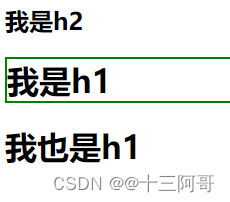
16. 通用(普通)兄弟选择器
<!DOCTYPE html>
<html lang="en">
<head>
<meta charset="UTF-8">
<meta http-equiv="X-UA-Compatible" content="IE=edge">
<meta name="viewport" content="width=device-width, initial-scale=1.0">
<title>Document</title>
<style>
/* 普通兄弟选择器:匹配h1[之后]的所有兄弟h3,可以不用相邻,只要是之后就可以匹配,但必须是兄弟元素; */
/* 只是匹配兄弟, 不包括自己本身; */
h1~h3 {
color: blue;
}
</style>
</head>
<body>
<div>
<h1>我是h1</h1>
<h3>我是h3</h3>
<h2>我是h2</h2>
<p>HelloWorld</p>
<h3>我也是h3</h3>
</div>
</body>
</html>
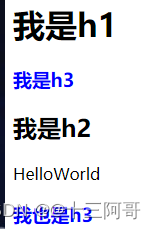
17. 交集选择器
<!DOCTYPE html>
<html lang="en">
<head>
<meta charset="UTF-8">
<meta http-equiv="X-UA-Compatible" content="IE=edge">
<meta name="viewport" content="width=device-width, initial-scale=1.0">
<title>Document</title>
<style>
div {
width: 200px;
height: 200px;
}
div.test {
background-color: red;
}
div#id1 {
background-color: green;
}
</style>
</head>
<body>
<div class="test">123</div>
<div id="id1">456</div>
<div>789</div>
<div>8910</div>
</body>
</html>
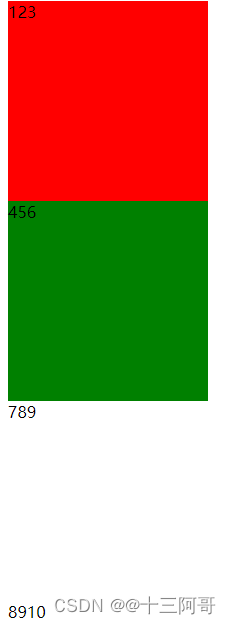
18. 选择器优先级
<!DOCTYPE html>
<html lang="en">
<head>
<meta charset="UTF-8">
<meta http-equiv="X-UA-Compatible" content="IE=edge">
<meta name="viewport" content="width=device-width, initial-scale=1.0">
<title>Document</title>
<style>
body {
font-weight: bolder;
}
div {
color: red;
/* color: red!important; */
}
.test {
color: green;
}
#Id {
color: blue;
}
</style>
</head>
<body>
<!--
优先级:
选择器 选择器权重
!important 无穷大
行内样式"style=" 1000
ID选择器 0100
类选择器,伪类选择器,属性选择器 0010
元素选择器,伪元素选择器 0001
继承 或 * 0000
注意事项:
1.权重是由4位数字组成,不会有进位;
2.等级判断自左至右,如果某一位数值相同,则判断下一位数值。
-->
<div class="test" id="Id" style="color: purple">选择器优先级别问题</div>
</body>
</html>

19. 权重叠加
<!DOCTYPE html>
<html lang="en">
<head>
<meta charset="UTF-8">
<meta http-equiv="X-UA-Compatible" content="IE=edge">
<meta name="viewport" content="width=device-width, initial-scale=1.0">
<title>Document</title>
<style>
body {
font-weight: bolder;
}
ul { /* ul权重:0001 */
color: red;
}
ul li { /* ul+li权重:0001+0001=0002 */
color: green;
}
.nav li { /* .nav+li权重:0010+0001=0011 */
color: blue;
}
</style>
</head>
<body>
<ul class="nav">
<li>是的</li>
<li>好的</li>
<li>的的</li>
</ul>
<!--
权重叠加小练习:
(1) div ul li => 0003
(2).nav ul li => 0012
(3)a:hover => 0011 (0001 + 0010)
(4).nav a => 0011 (0010 + 0001)
-->
</body>
</html>

20. 权重练习
<!DOCTYPE html>
<html lang="en">
<head>
<meta charset="UTF-8">
<meta http-equiv="X-UA-Compatible" content="IE=edge">
<meta name="viewport" content="width=device-width, initial-scale=1.0">
<title>Document</title>
<style>
.nav li {
color: red;
}
.nav .blue {
color: blue;
}
</style>
</head>
<body>
<ul class="nav">
<li class="blue">香蕉</li>
<li>苹果</li>
<li>葡萄</li>
<li>梨子</li>
</ul>
<!--
实际上之前你可能一眼望去,第一个li的颜色被修改成了蓝色;
实际这是一种错觉;
根据权重:.nav li => 0011 (0010 + 0001)
.blue => 0010 (0010)
由于0011 > 0010, 所以第一个小li最终还是显示为红色 。
如若成功,则必须 .nav .blue => 0020 > 0011
=>此时第一个小li就真的成了蓝色。
-->
</body>
</html>

21. 其他
21.1 多类名选择器
<!DOCTYPE html>
<html lang="en">
<head>
<meta charset="UTF-8">
<meta name="viewport" content="width=\, initial-scale=1.0">
<title>default</title>
<!-- 多类名选择器 -->
<style>
.cls1 {
color: red;
}
.cls2 {
font-size: 35px;
}
</style>
</head>
<body>
<h1>css多类名选择器</h1>
<div class = "cls1 cls2"> Hello World!</div>
</body>
</html>

21.2 复合选择器
<!DOCTYPE html>
<html lang="en">
<head>
<meta charset="UTF-8">
<meta name="viewport" content="width=device-width, initial-scale=1.0">
<title>Document</title>
</head>
<style>
/* 后代选择器 */
ol li {
color: red;
}
ol li a {
color: yellow;
}
ul li a {
font-size: 100px;
color: pink;
}
.test li a {
font-size: 50px;
color: green;
font-weight: bold;
}
/*并集选择器 */
div,
p,
.pig li {
color: green;
font-weight: bold;
}
</style>
<body>
<!--
后代选择器:层层递进;
并集选择器
伪选择器
-->
<h1>ol_后代选择器</h1>
<ol>
<li>我是ol的子集</li>
<li>我是ol的子集</li>
<li>我是ol的子集</li>
<li><a href="#">我是孙子集</a></li>
</ol>
<!-- -->
<h1>ul_后代选择器</h1>
<ul>
<li>我是ul的子集</li>
<li>我是ul的子集</li>
<li>我是ul的子集</li>
<li><a href="#">HelloWorld</a></li>
</ul>
<ul class="test">
<li>我是ul的子集</li>
<li>我是ul的子集</li>
<li>我是ul的子集</li>
<li><a href="#">HelloWorld world!!!!!!</a></li>
</ul>
<!--并集选择器可以选择多组标签,同时为他们定义相同的样式,通常用于集体声明 -->
<h1>并集选择器</h1>
<div>熊大</div>
<p>熊二</p>
<span>光头强</span>
<ul class="pig">
<li>佩奇</li>
<li>佩奇的爹</li>
<li>佩奇的妈</li>
</ul>
</body>
</html>

21.3 link标签与伪元素选择器
<!DOCTYPE html>
<html lang="en">
<head>
<meta charset="UTF-8">
<meta name="viewport" content="width=device-width, initial-scale=1.0">
<title>Document</title>
<style>
/* 为防止不生效,严格按照LVHA的顺序进行写! */
/* 未访问的链接的颜色 */
/* 标签a在浏览器中具有默认样式,所以在实际工作中需要单独给链接指定样式 */
a:link {
color: red;
text-decoration: none;
}
/*已访问的链接的颜色 */
a:visited {
color: green;
}
/*悬浮时的颜色 */
a:hover {
color: black;
}
/* 活动链接的颜色:点了但没有松开 */
a:active {
color: deeppink;
}
/* :focus */
input:focus {
background-color: red;
}
</style>
</head>
<body>
<a href="#"> Hello World!I am coming!</a><br>
<table>
<tr>
<td><input type="text" value="Hello"></td>
<td><input type="text" value="World"></td>
<td><input type="text" value="Hello World"></td>
</tr>
</table>
</body>
</html>

21.4 伪元素选择器
<!DOCTYPE html>
<html lang="en">
<head>
<meta charset="UTF-8">
<meta http-equiv="X-UA-Compatible" content="IE=edge">
<meta name="viewport" content="width=device-width, initial-scale=1.0">
<title>Document</title>
<style>
/* 此时只会选择p元素中的首行进行匹配! 默认是对全体元素都有效果,可以加以限定!*/
p::first-line {
background-color: red;
}
::first-letter { /* 此时将对所有的首字母加以修饰 */
color: green;
font-weight: bolder;
}
a::before {
content: "Click to here ";
color: yellow;
}
a::after {
content: '!';
color: red;
}
/* CSS计数器: */
body {
counter-reset: Count 0;
}
div::before {
content: counter(Count) ". ";
counter-increment: Count 1;
}
</style>
</head>
<body>
<p>
This is a apple!<br>
helloWorld<br>
</p>
<p>
These are bananas!<br>
i am happy!
</p>
<h3>How are you?</h3>
<h4>you are a good person!</h4>
<a href="#">我是空链接</a>
<div>我是div1</div>
<div>我是div2</div>
<div>我是div3</div>
</body>
</html>

21.5 CSS选择器1
<!DOCTYPE html>
<html lang="en">
<head>
<meta charset="UTF-8">
<meta http-equiv="X-UA-Compatible" content="IE=edge">
<meta name="viewport" content="width=device-width, initial-scale=1.0">
<title>Document</title>
<style>
/* 不管任何元素,只要它的第一个儿子是span就能匹配 */
span:first-child {
color: red;
}
/* 不管任何元素,只要它的最后一个儿子是div就能匹配 */
div:last-child {
color: green;
}
/* 匹配p的子元素中第一个元素为span的元素,也即是p的第一个儿子为span的元素 */
p > span:first-child {
background-color: yellow;
}
/* 匹配任意元素中只有一个儿子并且这个儿子必须是p元素 */
div:only-child {
border: 1px solid red;
}
/* */
p:only-of-type {
color: yellow;
}
</style>
</head>
<body>
<div id="div">
<span>好吧</span>
<h4>h4标题</h4>
<h3>
<div>你好吗</div>
<div>还行吧</div>
</h3>
</div>
<h2>中华人民共和国</h2>
<span>我是span</span></br>
<p>
<span>helloWorld</span>
<span>love you</span>
<div>美国</div>
</p>
<div>
<!-- <p>This is a paragraph.</p> -->
<!-- <h2>唯一的一个儿子</h2> -->
<div>你好!!!</div>
</div>
</body>
</html>
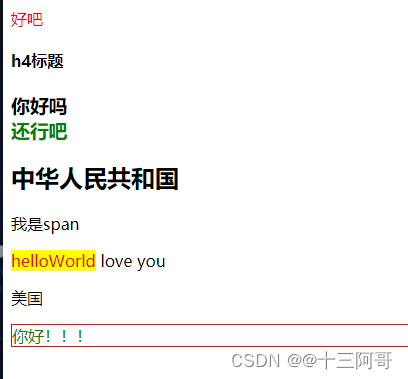
21.6 CSS选择器2
<!DOCTYPE html>
<html lang="en">
<head>
<meta charset="UTF-8">
<meta http-equiv="X-UA-Compatible" content="IE=edge">
<meta name="viewport" content="width=device-width, initial-scale=1.0">
<title>Document</title>
<style>
/* */
p:only-of-type {
color: red;
}
/* 匹配body中的第三个儿子,索引号从1开始: */
body > :nth-child(3) {
color: green;
}
/* */
:enabled {
border: 1px solid red;
}
:disabled {
background-color: green;
}
/* */
span {
color: red;
}
:checked + span {
border: 1px solid blue;
color: green;
}
/* */
/* :valid {
background-color: green;
}
:invalid {
background-color: red;
} */
/* */
:in-range {
color: green;
}
:out-of-range {
color: red;
}
/* */
:required {
background-color: green;
}
:optional {
background-color: red;
}
</style>
</head>
<body>
<div>
<p>我是这个div中唯一的段落元素.</p>
</div>
<div>
<p>这个div中有多个段落..</p>
<p>我也是一个段落.</p>
</div>
<div>我是老三</div>
<!-- <textarea name="" id="" cols="30" rows="10">jfsljfsjflsjfjslfl</textarea><br> -->
<!-- <textarea name="" id="" cols="30" rows="10" disabled>456488fsf sf </textarea><br> -->
<input type="checkbox" name="" id="">
<span>将会被匹配了</span><br>
<!-- <input type="text" name="" id="" required> -->
<!-- <input type="number" name="" id="" value="10" min="0" max="100" step="1"> -->
<input type="number" required><br>
<input type="number">
</body>
</html>

21.7 CSS选择器3
<!DOCTYPE html>
<html lang="en">
<head>
<meta charset="UTF-8">
<meta http-equiv="X-UA-Compatible" content="IE=edge">
<meta name="viewport" content="width=device-width, initial-scale=1.0">
<title>Document</title>
<style>
button:active {
background-color: green;
}
:focus {
color: red;
}
/* */
a:not([href*="nihao"]) {
background-color: red;
}
:lang(en) {
/* border: 1px blue solid; */
}
/* */
div {
padding: 40px;
height: 200px;
background-color: gray;
/* border: 20px double black;
width: 200px;
height: 200px;
background-color: blue;
border-radius: 10px/60px; */
background-image: url(./res/1.ico);
background-repeat: no-repeat;
background-size: auto;
background-position: 100px 100px;
background-origin: padding-box;
}
p {
border: 10px;
background-color: red;
box-shadow: 5px 4px 10px 10px green , 4px 4px 20px gray inset;
}
#span {
outline: thick solid red;
outline-offset: 5px;
}
</style>
</head>
<body>
<button>点击</button>
<input type="text"><br>
<a href="www.nihao.com">你好</a><br>
<a href="www.buhao.com">不好</a><br>
<div>好呗</div>
<p>好吧</p>
<span id="span">我好</span>
</body>
</html>

21.8 伪系列选择器
直译过来就是:css引入伪类和伪元素概念是为了格式化文档树以外的信息。
就是说,伪类和伪元素是用来修饰不在文档树中的部分,
比如,一句话中的第一个字母,或者是列表中的第一个元素。
下面分别对伪类和伪元素进行解释。
伪类 => 用于当已有元素处于的某个状态时,为其添加对应的样式,这个状态是根据用户行为而动态变化的。
比如说,当用户悬停在指定的元素时,我们可以通过:hover来描述这个元素的状态。
虽然它和普通的css类相似,可以为已有的元素添加样式,
但是它只有处于dom树无法描述的状态下才能为元素添加样式,所以将其称为伪类。
伪元素 => 用于创建一些不在文档树中的元素,并为其添加样式。
比如说,我们可以通过:before来在一个元素前增加一些文本,并为这些文本添加样式。
虽然用户可以看到这些文本,但是这些文本实际上不在文档树中。
CSS3规范中的要求使用双冒号(::)表示伪元素,以此来区分伪元素和伪类,比如::before和::after等伪元素使用双冒号(::),:hover和:active等伪类使用单冒号(:)。
除了一些低于IE8版本的浏览器外,大部分浏览器都支持伪元素的双冒号(::)表示方法。
然而,除了少部分伪元素,如::backdrop必须使用双冒号,大部分伪元素都支持单冒号和双冒号的写法,比如::after,写成:after也可以正确运行。
大概的意思就是:虽然CSS3标准要求伪元素使用双冒号的写法,但也依然支持单冒号的写法。为了向后兼容,我们建议你在目前还是使用单冒号的写法。
实际上,伪元素使用单冒号还是双冒号很难说得清谁对谁错,你可以按照个人的喜好来选择某一种写法。
/
伪元素选择器:
伪元素选择器是用于向某些元素设置特殊效果。
伪元素选择器选中的并不是真实的 DOM 元素,所以叫伪元素选择器。伪元素选择器常用的也就下面 5 个:
::first-line: 为某个元素的第一行文字使用样式。
::first-letter: 为某个元素中的文字的首字母或第一个字使用样式。
::before: 在某个元素之前插入一些内容。
::after: 在某个元素之后插入一些内容。
::selection: 对光标选中的元素添加样式。
这一篇讲了伪类选择器和伪元素选择器,这两种选择器都是为了向元素添加特殊效果,
但这些效果仅用于显示,不能被 js 操作。选择器这部分里列出来的也都是 CSS3 之前版本定义出来的常用选择器。
伪类选择器:
在页面中,有时候同一个元素在不同动作下有不同的样式。
比如链接在没有点击的时候有个样式,在鼠标放上去有另外的样式,
还有在点击完成以后又会又一个样式。这几种情况下这个链接的标签并没有变化,
有变化的只是它的状态,这时候就可以里用伪类来实现这个需求。
在浏览器中,伪类的出现是为了向某些选择器添加特殊的效果或限制。
伪类是在正常的选择器后面加上伪类名称,中间用冒号(:)隔开。比如我们希望一个超链接在鼠标放上去的时候有一个下划线。
伪类主要有两方面的用处,一方面是标记一些特殊的状态,也就是一开始说的那个例子那种;另外还有一类伪类是有筛选的功能。
一、标记状态的伪类:
:link: 选取未访问过的超链接元素。
:visited: 选取访问过的超链接元素。
:hover: 选取鼠标悬停的元素。
:active: 选取点中的元素。
:focus: 选取获得焦点的元素。
二、筛选功能的伪类:
:empty: 选取没有子元素的元素。比如选择空的 span,就可以用 span:empty 选择器来选择。这里要注意元素内有空格的话也不能算空,不会被这个伪类选中。
:checked: 选取勾选状态的 input 元素, 只对 radio 和 checkbox 生效。
:disabled: 选取禁用的表单元素。
:first-child: 选取当前选择器下第一个元素。
:last-child: 选取当前选择器下第一个元素。
:nth-child(an+b): 选取指定位置的元素。
:nth-last-child(an+b): 这个伪类和 nth-child 相似,只不过在计数的时候,这个伪类是从后往前计数。
:only-child: 选取唯一子元素。如果一个元素的父元素只有它一个子元素,这个伪类就会生效。如果一个元素还有兄弟元素,这个伪类就不会对它生效。
:only-of-type: 选取唯一的某个类型的元素。如果一个元素的父元素里只有它一个当前类型的元素,这个伪类就会生效。这个伪类允许父元素里有其他元素,只要不和自己一样就可以。
21.9 图片

